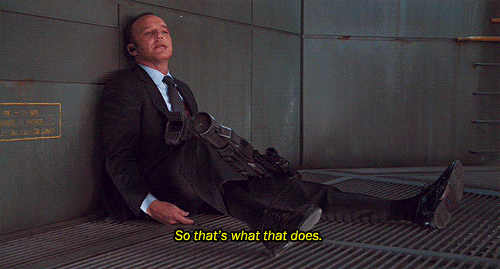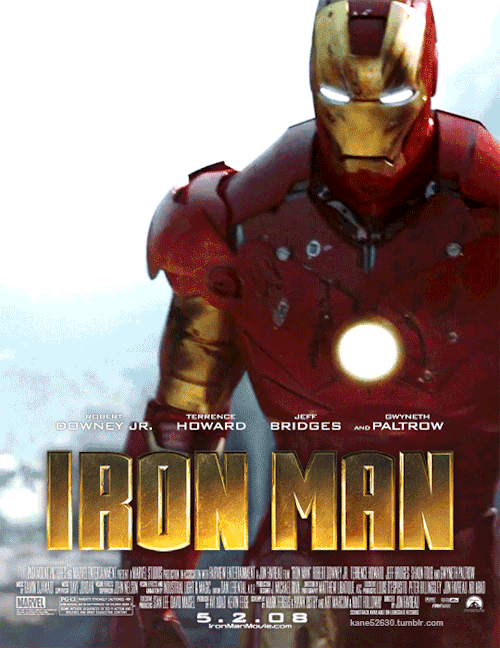Introduction: The Marvel Cinematic Universe is an ongoing film franchise consisting of 20 movies and a collective box office gross of $17.528 billion (as of this writing). The series is produced by Marvel Studios, lead by President Kevin Feige, and as of 2012 distributed by Walt Disney Studios Motion Pictures. For this installment of Why it Worked, we’ll be diving in to Marvel’s first phase of movies and how they launched the mega giant franchise into the mainstream.
The Plots: The four of the first five films in the MCU serve as introductions to the core Avengers: Iron Man, Hulk, Thor and Captain America. Each film shows who the leading character is and why we should want to root for them in future films. While these films have the same “origin story” idea, it’s the executions of these films that make them distinct from one another. Iron Man is a character study into the mind and ethics of an arms dealer who dawns an armored suit after he finds his weapons are being used by terrorists. The Incredible Hulk is a monster movie in which the main character is running from the U.S. Army while also trying to cure himself of his condition. Thor is a down to earth fantasy drama in about a prince bounded to exile as he learns what it means to be a worthy king. Captain America is a war movie about a scrawny young man turned buffed super solider, who fights Nazis in the heat of World War II. The only film that doesn’t follow the “origin story” concept is Iron Man 2, in which Tony Stark must face his demons when they become aware of his newfound hero status. The big finale of Phase 1 is just that: a finale. The heroes are all finally brought together to stop a mad man from conquering the world with his army of aliens. It was the film that the first 5 films were building up to, and given its positive reception (92% with an average 8/10 from 336 reviews on Rotten Tomatoes) and big box office numbers (1.519 billion dollars worldwide), it paid off in spades. This was accomplished by having the films follow 3 basic steps that every good film follows: 1. Build a connection between the characters and the audience, 2. Have a focused and well thought out script, and 3. Leave the audience wanting more. Each film delivers on that and then some, with clever jokes, solid acting and stellar directing from the likes of Jon Favereau, Louis Leterrier, Kenneth Branagh, Joe Johnston, and Joss Whedon.

Cast and Characters: It’s been stated before but it does bear repeating because it’s true: Robert Downey, jr., Chris Hemsworth and Chris Evans are irreplaceable in their respective roles. They give such genuine and emotional performances that it’s hard to picture anyone else in the role. Starting with Robert Downey, jr. as Tony Stark, he plays the suave, charismatic, genius billionaire with just the right amount of snark and prowess, while also showing how human Tony is during the more emotional moments. Chris Hemsworth played up the Shakespearian aspect of Thor and delivers such a nuanced performance with a charming personality, comedic naivety, and stoic persona. Chris Evans just owns the roll of Steve Rogers, showing optimism, courage, charm, and valiant heroism in just about every scene he’s in. Edward Norton gave a solid performance as Bruce Banner (with Lou Ferrigno providing the voice of the Hulk), but once Mark Ruffalo replaced him in the Avengers, audiences saw him as the better Banner (and to an extent I agree). Jeremy Renner and Scarlett Johansson bring solid work to the parts of Clint Barton/Hawkeye and Natasha Romanoff/Black Widow respectively, with Samuel L. Jackson being perfect casting as Nick Fury. Other actors that gave a great performance to supporting characters include Hayley Atwell as Peggy Carter, William Hurt as General Ross, Gwyneth Paltrow as Pepper Potts, Stellan Skarsgard as Erik Selvig and Colbie Smulders as Maria Hill. Of course, the best supporting character of Phase 1 and the underdog of the MCU is Clark Gregg as Phil Coulson. The snarky attitude, the charming demeanor, his nonchalant reaction to the presence of a Norse god, Coulson is the type of character that audiences loved so much, Marvel gave him his own show on ABC (which will air it’s 6th season in July 2019).

The Big Baddies: I’ve mentioned this in my defense of the MCU before and I’ll say it again: the “Marvel has weak villains” argument is absurd. Just because the movies focus on the heroes more than the villains (as superHERO movies should), that doesn’t mean the villains didn’t leave an impact. Obediah Stane, played brilliantly by Jeff Bridges, isn’t just an “anti-Tony Stark,” he’s charismatic, intimidating, has a couple clever one liners and is willing to do what ever it takes to get his way. Tim Roth brings out the greedy and addictive nature of Emil Blonsky in The Incredible Hulk, making him psychotic and in over his head. Mickey Rourke gave it his all as Anton Vanko, bringing tragedy, anger, charisma and patience to the character despite limited screen time. Johann Schmidt/Red Skull wouldn’t be as memorable of a villain if it wasn’t for Hugo Weaving’s extraordinary performance, giving the character charm, grit, pride and bitterness as he attempts to win WWII by any means necessary. Then there’s Loki, the MVV (Most Valued Villain) of Phase 1 and the MCU in general behind Thanos. Tom Hiddleston brought out the cunning and charismatic personality of Loki, while also showing his vulnerability and anger for being the lesser of Odin’s sons. And that was just in the first movie. When he appeared in The Avengers as the main bad guy, he became an audience favorite. Hiddleston owns every scene he’s in, smirking at the sight of chaos, rocking that’s black mullet, and being the biggest troll to the Avengers, particularly Thor. These villains might not be Doc Oct, Magneto, Green Goblin, Lex Luthor, or even the Joker, but they are memorable in their own right.

Costumes and VFX: It should be worth noting that the costumes for the characters are spot on from their comic book counter parts and then some. Iron Man’s armored suit looks like it leaped from the pages onto the screen. The combination of a practical suit with a digital one is seemless and dates the film wonderfully. Thor’s armor pays homage to Norse mythology while still having a modern look. He’s got the big flowing cape, the jagged scales on his arms, durable chest pieces and, of course, his signature hammer Mjolnir. Captain America has a more modernized look of his costume in both The First Avenger and The Avengers. In the former, it’s more like a army solider uniform with a red, white and blue color palette with a holster to carry extra gear. In the Avengers, it has more in common with the comic book costume with brighter colors and smooth looking fabric. What remains constant in both films his his iconic shield, with practical and digital effects making it feel like a force to be reckoned with. The Hulk was previously brought to life through CGI in 2003 with Ang Lee’s film, Hulk. The effect, while impressive at the time, didn’t quite fully realize the character as he looked like a big fella in a rubber costume throughout the film. That changed forever with the arrival of The Incredible Hulk in 2008, where he looked like he was almost real. The CGI provided by Rhythm and Hues looks excellent as the Hulk looks like the big, green angry Goliath from the comics. Large veiny muscles, big green eyes and slick black hair, the Hulk looked his best back then and still holds up today. When Hulk appeared in the Avengers and had a new design provided by Industrial Light & Magic (with motion capture provided by Mark Ruffalo), he looked as good as a happy marriage between Ang Lee’s Hulk (also by ILM) and Leterrier’s Hulk. These are just a few examples on the impressive use of CGI and practical effects used in the films. Other notable examples include shrinking Chris Evens as skinny Steve Rogers via body double, the colorful costumes of Loki, Lady Sif and the Warriors 3, the make-up of Red Skull’s head and so much more.

Where it Falters: A criticism I did not address in my defense of the MCU is the lack of memorable scores. I disagree somewhat as I still remember Iron Man, Hulk, Captain America and the Avenger’s theme among others. It’s really Thor that gets the short end of the stick, and including the fact that it was a tad predictable it’s the weakest film in Phase 1 for me. Another problem that has always bothered me is how the character of Betty Ross is completely ignored 10 years later. It’s not like Liv Tyler gave an unimpressive performance, far from it. She was actually very helpful to Bruce, showed genuine chemistry with him and she wasn’t afraid to stand up to her father, General Ross. So why does he get to reappear in Captain America: Civil War and Avengers: Infinity War and yet Betty doesn’t get so much as a name drop in The Avengers? Another gripe I have with Phase 1 is how small the films are. I know this was intentional by design, but a post credit scene showing the Mandarin as the head of the Ten Rings terrorist group would’ve been nice. I also would’ve liked to have seen more of the Howling Commandos (and the Warriors 3) in The First Avenger. Lastly, I have to ask: where on Earth is Samuel Stern? He was set up to become the comic book villain, the Leader, and then...nothing. I’m aware Universal still owns the distribution rights to Hulk, but a simple in-universe explanation takes like 10 seconds at best.

Conclusion: The first Phase of the Marvel Cinematic Universe successfully kicked off the juggernaut franchise with great characters, clever writing and solid performances from the actors. I would’ve gone into detail about the action, but who am I kidding? It’s always good no matter how many times it’s said. With impressive blending of practical and digital effects, these scene come alive on screen for popcorn eating spectacle. I’ll be going over Phase 2 next time on Why it Worked, so until next time, thanks so much for reading and I’ll see you soon ;)


No comments:
Post a Comment